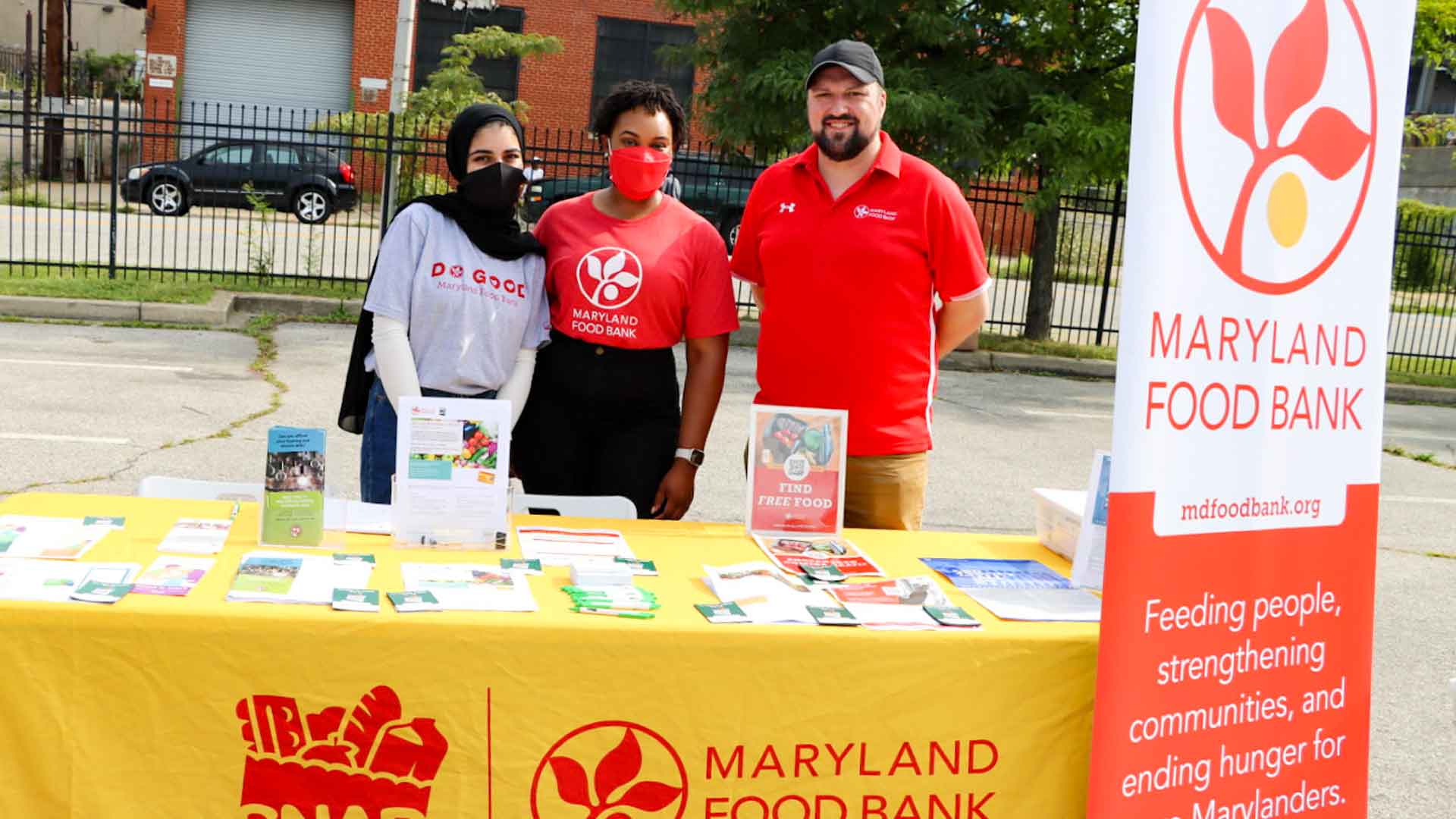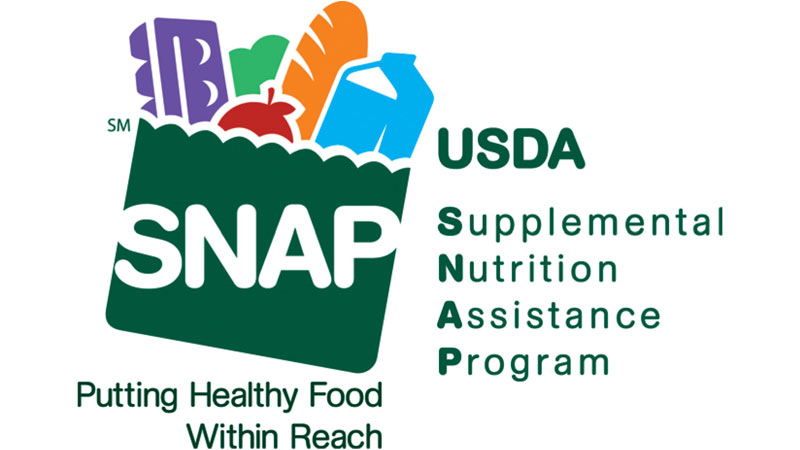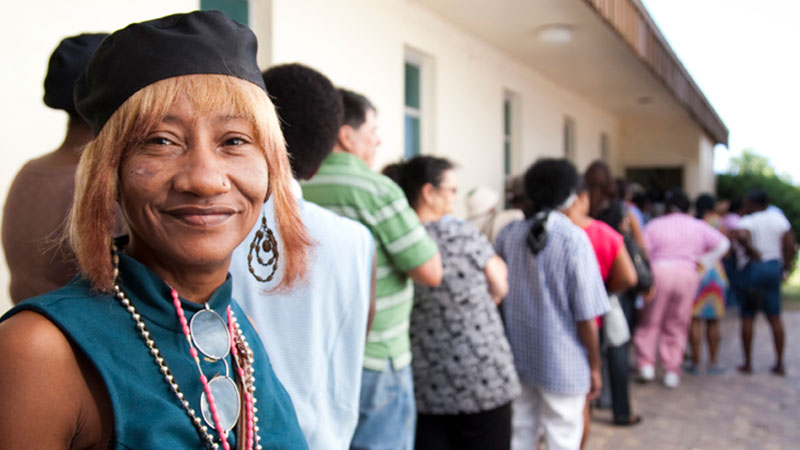Meet the MFB Family: The Community Impact Team

Today, helping our neighbors in need is about much more than providing access to nutritious food. We know that addressing the underlying reasons why Marylanders continue to face food insecurity is the shortest path to a hunger-free Maryland. It’s why we’ve recently reviewed and refreshed many of our programs, especially neighbor-facing ones.
Working with Marylanders to apply for federal food-aid programs like the Supplemental Nutrition Assistance Program, otherwise known as SNAP, has been at the forefront of this work. However we recently assessed our resources and expanded our focus, charting a new path that is led by the Community Impact Team (CIT)—a group of food bank employees dedicated solely to offering solutions to the root causes of hunger that continue to plague our state.
The CIT is part of our larger Programs department, which is headed by Chief Programs Officer Nekeisia Booyer. It was Booyer who first saw an opportunity to bring these efforts into even closer alignment with our strategic plan.
“It has to be more than just ‘here’s nutritious food today,’” Booyer explained. “We’re now going deeper and gaining a better understanding of the role we play in the quality of people’s health, what their needs are, and how we can provide services that help build those pathways out of hunger for more of our neighbors.”

The Evolution of Neighbor-facing Relief
Prior to the formation of the CIT, Chris Speedie, now our Community Impact Manager, began working at the food bank as part of the SNAP Outreach Team.
“While our core work is still helping people apply for SNAP benefits, the Community Impact Team is now participating in a lot more outreach events. We’re going out into communities, really trying to target specific, priority populations where not only SNAP, but other benefits and wraparound services would have the greatest impact on our neighbors,” he said.
And one tool the CIT uses to determine where to offer assistance is our Maryland Hunger Map, which helps identify the hunger hotspots where priority populations generally live.
During events and as part of one-on-one phone calls or online video sessions, the team takes a personal approach to this holistic assistance.
- First, a member of the CIT has a conversation with a neighbor to determine their individual needs and understand the barriers they face.
- Next, they help applicants complete the forms for government benefits such as SNAP, Temporary Cash Assistance (TCA or TANF), Energy Assistance (OHEP), Medicare Buy-in, and certain forms of Medicaid.
- Finally, they connect neighbors to wraparound services and community resources, including home-delivered food boxes, childcare, housing assistance, health insurance, workforce development, and legal assistance, among many other resources
At one recent event at MFB Network Partner Fishes & Loaves, Speedie recalled partnering with BGE and the Maryland Department of Human Services to offer energy assistance to neighbors in Southeast Baltimore.
“It was a great partnership. They advertise that people can apply for energy assistance, while we see if they need help enrolling for other benefits. Lowering utility bills and receiving SNAP can really have a significant impact on someone’s quality of life,” he said.

MFB is Part of the Community Too
While the Community Impact Team helps to further the first two pillars of MFB 3.0, behind the scenes, the new team is also an investment in our own sustainability and growth.
Booyer’s background in workforce development, and her experience witnessing firsthand the temporary need families had for assistance, gave her a unique perspective on unifying and improving this foundational effort.
She identified synergies between FoodWorks’ holistic support of their students and the efforts of the CIT and decided to bring the two groups together under a newly created Senior Vice President of Community Impact position.
Understanding that the department couldn’t be all things to all people, Booyer knew focusing the team on maximizing relationships and leveraging partnerships would be key to success, so she brought on Kisha McCray to lead the CIT.
“Kisha’s depth of experience with community-based resources in previous jobs, such as working alongside parents and youth at Head Start and building partnerships across different segments of society at WIC, is exactly what our neighbors need in this role,” she said.
And with Kisha on board, our neighbors have a brighter future ahead of them.
“I’m really excited to be here,” said McCray. “I’m really looking forward to continuing to use my experience and passion to help our neighbor-facing programs have an even greater impact on people’s lives.”
Help us Have an Even Greater Impact on the Community
While our Community Impact Team has grown, so too, has the number of neighbors whose lives could be changed by their efforts.
But we still need your support.
We’re looking for people who like to talk to people. People who will listen and understand what barriers to food security a neighbor is facing and will connect them to services that can help them overcome those challenges.
Strengthen the Community Impact Team
Reach out to Chris Speedie for more information on how you can help.






